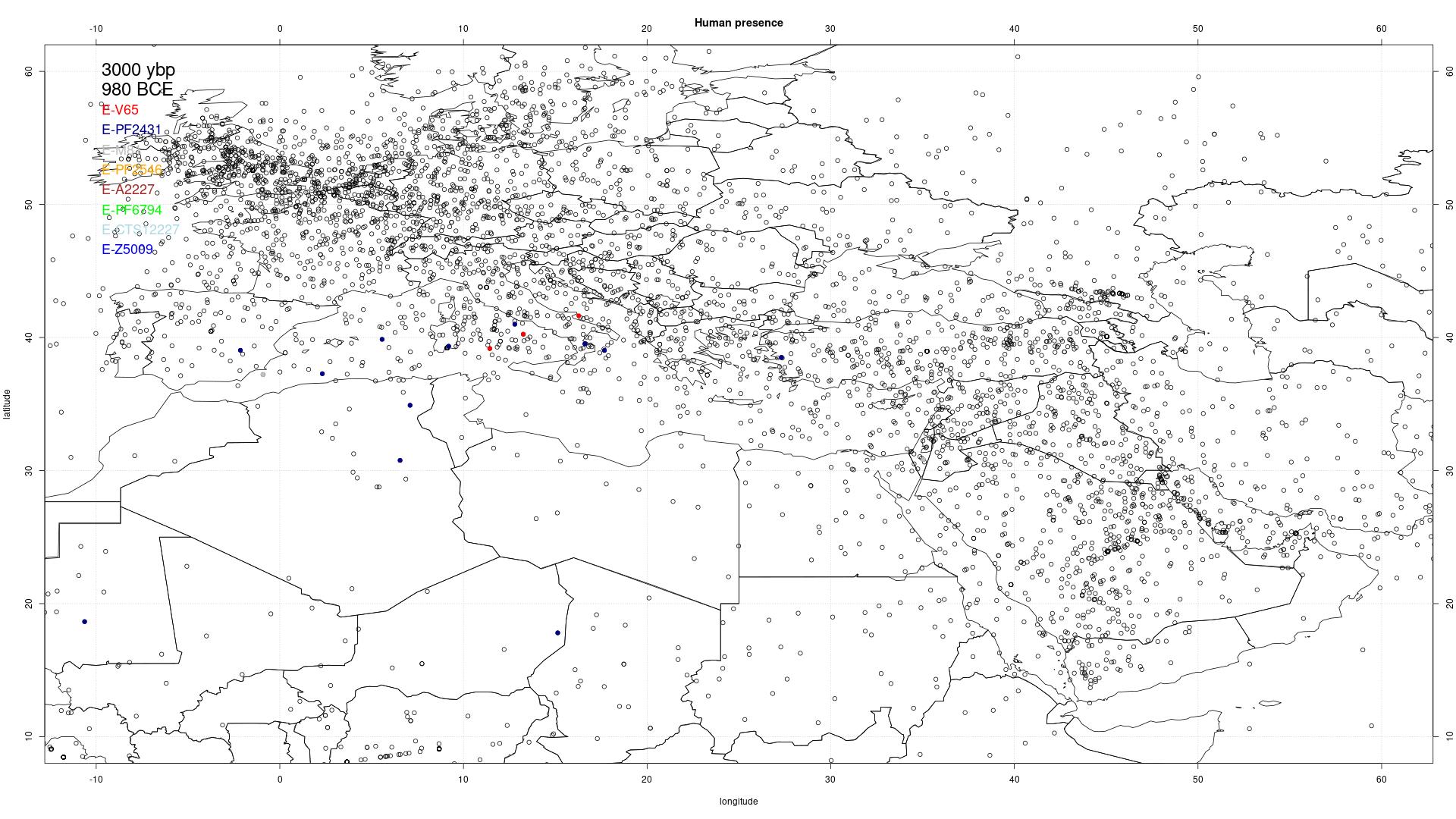




 |  |  |  |  |
 |  |  |  |  |  |  |
link to phylogenetic tree: E-V65
link to phylogenetic tree: E-PF2431
link to phylogenetic tree: E-M81
link to phylogenetic tree: E-PF2546
link to phylogenetic tree: E-A2227
link to phylogenetic tree: E-PF6794
link to phylogenetic tree: E-CTS12227
link to phylogenetic tree: E-Z5009
yfull-links: E - E-M5479 - E-P147 - E-P177 - E-M215 - E-M35 - E-L539 - E-M78 - E-Z1902 - E-Z22639 - E-V65
yfull-links: E - E-M5479 - E-P147 - E-P177 - E-M215 - E-M35 - E-Z827 - E-L19 - E-PF2431
yfull-links: E - E-M5479 - E-P147 - E-P177 - E-M215 - E-M35 - E-Z827 - E-L19 - E-M81
yfull-links: E - E-M5479 - E-P147 - E-P177 - E-M215 - E-M35 - E-Z827 - E-L19 - E-M81 - E-CTS4236 - E-PF2548 - E-Y8827 - E-PF2546
yfull-links: E - E-M5479 - E-P147 - E-P177 - E-M215 - E-M35 - E-Z827 - E-L19 - E-M81 - E-CTS4236 - E-PF2548 - E-Y8827 - E-PF2546 - E-A2227
yfull-links: E - E-M5479 - E-P147 - E-P177 - E-M215 - E-M35 - E-Z827 - E-L19 - E-M81 - E-CTS4236 - E-PF2548 - E-Y8827 - E-PF2546 - E-PF6794
yfull-links: E - E-M5479 - E-P147 - E-P177 - E-M215 - E-M35 - E-Z827 - E-L19 - E-M81 - E-CTS4236 - E-PF2548 - E-Y8827 - E-PF2546 - E-CTS12227
yfull-links: E - E-M5479 - E-P147 - E-P177 - E-M215 - E-M35 - E-Z827 - E-L19 - E-M81 - E-CTS4236 - E-PF2548 - E-Y8827 - E-PF2546 - E-Z5009


The Berber language has different periods of evolution. It seems likely that we can discriminate three periods.
After this last period the language was influenced by the Arab language, which became the main power, religion and language in the Maghreb.
The moment of the dispersion of the language and peoples is probably the period of Massinissa. Fitting the timescale it is easiest to fit his genealogy, it would correspond to E-Z5009. A discussion on the accuracy of the time estimate of the relation between E-Z5009 and Massinissa is in progress.
The E-M81 are the far majority of the Berber population in Morocco, sometimes more than 90 percent. The discrete population growth is concentrated near the period of Massinissa in Morocco, while the discrete population growth in Lybia, Tunesia is more near the moment of the Arab conquest. They also have a larger percentage of J1 population, originating from Hejaz. Algeria has in intermediate position. The difference is probably the result of the larger area of land in Morocco that is suitable for agriculture, while the Arabs had their control of the Maghreb mainly origanized in coastal cities in the present areas of Tunisia and Algeria.
We can think of a few scenario's with respect to the usage of the spoken language and script. Given the diversity and the number of written documents, it probably easiest to consider that the spoken language was written in the most common scripts by the people who learned to write. This was the Phoenician script until the Romans took power and Carthage was destroyed. Since the Phoenician script had their changes in the Maghreb, it is normally called Punic script. After that moment the Roman script took over in the cities; only people outside the cities some elements of the Punic script remained.
Berber is an established member of the Afro-Asiatic language group, including several language families line Semitic, Cushitic, Chadic and Egyptian. Most language experts have indicated that the Berber language is not part of the Semitic language group, but they show several characteristics of the Semitic languages. Some indicate that Berber is the language in the Afro-Asiatic language family that is closest to the Semitic languages. Given the history of Carthage, a description where present Berber is a mixture of an elite language of Phoenician and a lower class agricultural class with a local language seems the easiest fit with the data and history.
The branch split locations in the Maghreb are very limited. Only one Y-DNA branch has a clear origin in the Maghreb in the period before the colonists from Tyre arrived. This is E-PF2431. This branch has, next to the branch splits in the Maghreb, several descending lines in Europe. With the present number of descending lines is Europe, the used diagrams do not give a complete view, and the branch split is often visualised further north than where the branch split occured.
Suppose one of the three elements had a different origin, e.g.